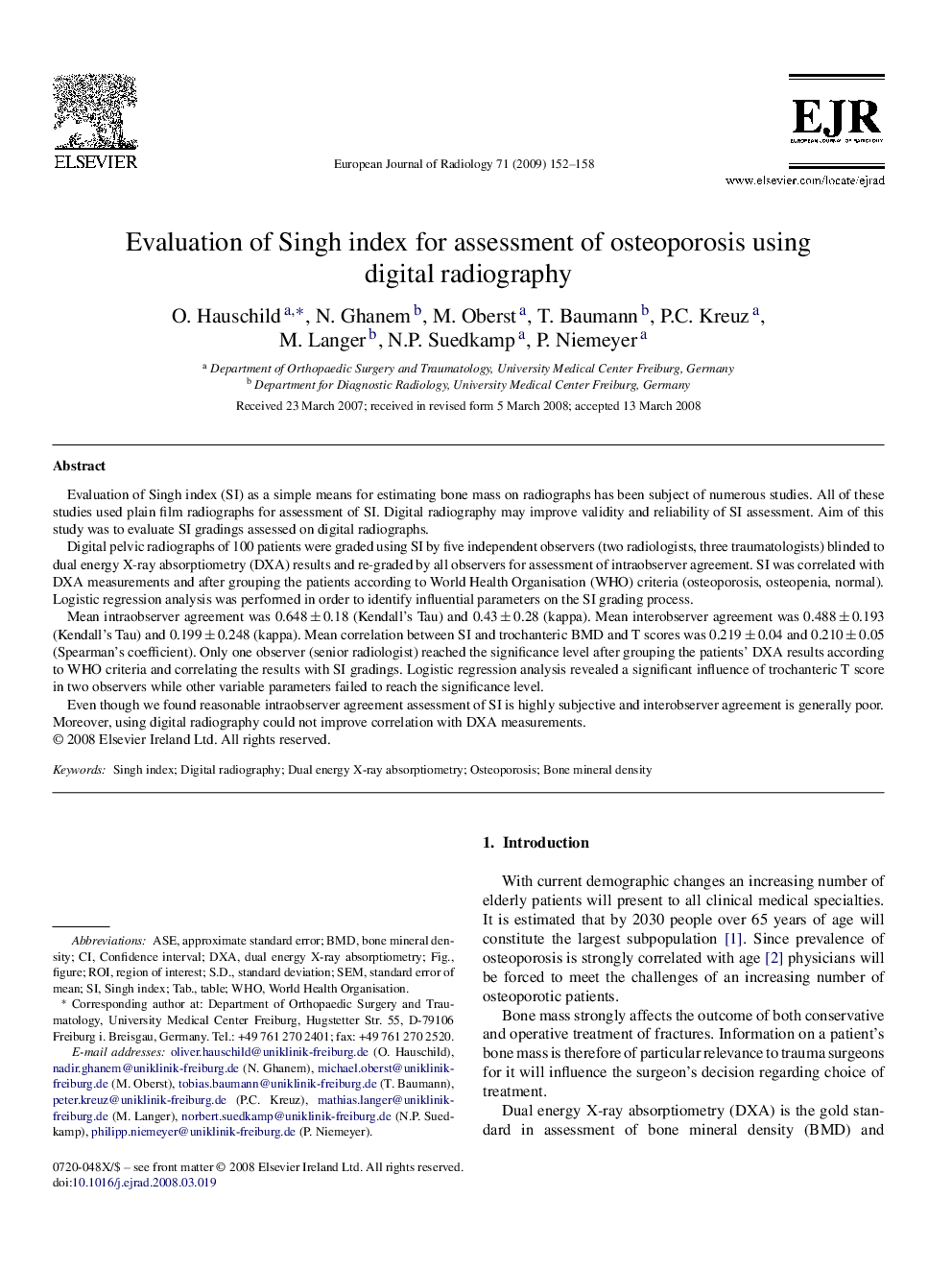| Article ID | Journal | Published Year | Pages | File Type |
|---|---|---|---|---|
| 4226902 | European Journal of Radiology | 2009 | 7 Pages |
Evaluation of Singh index (SI) as a simple means for estimating bone mass on radiographs has been subject of numerous studies. All of these studies used plain film radiographs for assessment of SI. Digital radiography may improve validity and reliability of SI assessment. Aim of this study was to evaluate SI gradings assessed on digital radiographs.Digital pelvic radiographs of 100 patients were graded using SI by five independent observers (two radiologists, three traumatologists) blinded to dual energy X-ray absorptiometry (DXA) results and re-graded by all observers for assessment of intraobserver agreement. SI was correlated with DXA measurements and after grouping the patients according to World Health Organisation (WHO) criteria (osteoporosis, osteopenia, normal). Logistic regression analysis was performed in order to identify influential parameters on the SI grading process.Mean intraobserver agreement was 0.648 ± 0.18 (Kendall's Tau) and 0.43 ± 0.28 (kappa). Mean interobserver agreement was 0.488 ± 0.193 (Kendall's Tau) and 0.199 ± 0.248 (kappa). Mean correlation between SI and trochanteric BMD and T scores was 0.219 ± 0.04 and 0.210 ± 0.05 (Spearman's coefficient). Only one observer (senior radiologist) reached the significance level after grouping the patients’ DXA results according to WHO criteria and correlating the results with SI gradings. Logistic regression analysis revealed a significant influence of trochanteric T score in two observers while other variable parameters failed to reach the significance level.Even though we found reasonable intraobserver agreement assessment of SI is highly subjective and interobserver agreement is generally poor. Moreover, using digital radiography could not improve correlation with DXA measurements.
